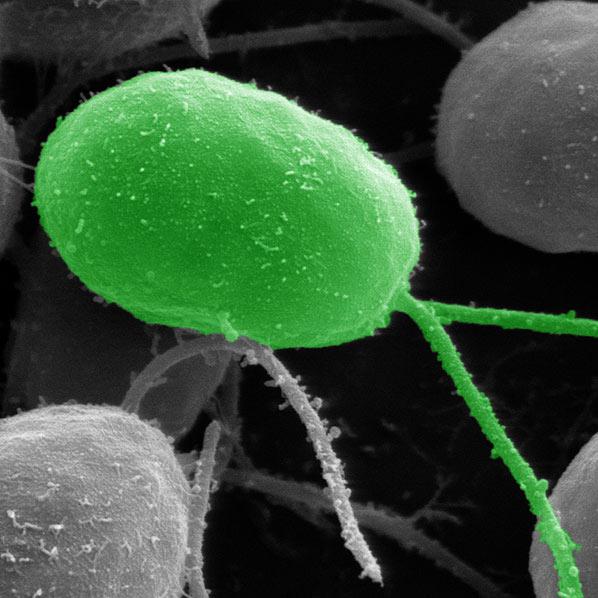
Submitted by Helen C. Scott on Fri, 06/05/2016 - 11:48
Most of our knowledge regarding miRNA-mediated regulation of gene expression derives from studies in multicellular plants – mainly Arabidopsis thaliana. We also know that miRNAs are present in unicellular organisms, such as the green alga Chlamydomonas reinhartii, but until now we had no idea about the biogenesis, mode of action and biological function of miRNAs in this important model organism.
Adrian Valli and colleagues in Prof. Sir David Baulcombe’ laboratory have recently developed a forward genetic approach to identify factors involved in the miRNA-mediated silencing pathway in Chlamydomonas, and among the isolate lines they identified three independent mutants that were unable to produce miRNAs and transposon-derived sRNAs. A PCR-based mapping technique located the mutagenic insertions into the Dicer-like protein (DCL)3 coding gene. To further characterize the effect of these mutations at the molecular level, sRNA and mRNA high-throughput sequencing analysis of the dcl3 mutant and parental lines was carried out. These analyses are helping us to identify and classify not only the whole population of mature miRNAs (and many others DCL3-dependent sRNAs), but also their corresponding precursors. Results indicate that in many sense miRNA precursors in Chlamydomonas resemble those from animals rather than miRNA precursors from higher plants, and revealed a further difference from higher plants in that the sRNAs are rarely negative switches of mRNA accumulation. The few transcripts that were more abundant in dcl3 mutant lines than in wild type cells were not due to sRNA-targeted RNA degradation but to direct DCL3 cleavage of miRNA and siRNA precursor structures embedded in the untranslated (and translated) regions of the mRNAs.
This analysis reveals that the miRNA-mediated RNA silencing in C. reinhardtii differs from that of higher plants, and informs about the evolution and function of this pathway in eukaryotes.
- Valli AA, Santos BACM, Hnatova S, Bassett AR, Molnar AM, Chung BY, Baulcombe DC. (2016) Most microRNAs in the single-cell alga Chlamydomonas reinhardtii are produced by Dicer-like 3-mediated cleavage of introns and untranslated regions of coding RNAs. Genome Res.
